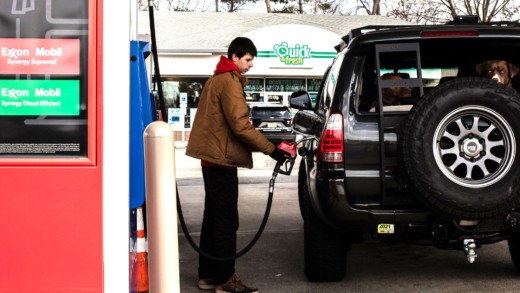This article explores the costs, trends, and unique characteristics of the most expensive dog breeds, while also providing insights into their care and affordability alternatives.
The Top 12 Most Expensive Dog Breeds
When it comes to expensive dog breeds, some stand out not just for their price tags but also for their unique characteristics. The average costs can vary significantly based on breed, location, and breeder reputation. Here’s a look at the top 12 most pricey breeds on the market:
- Samoyed – $4,000 to $11,000
- Tibetan Mastiff – $2,500 to $5,000
- Chow Chow – $3,000 to $8,500
- Akita – $1,500 to $4,500
- English Bulldog – $1,500 to $4,000
- Pharaoh Hound – $2,500 to $5,000
- Rottweiler – $2,000 to $8,000
- French Bulldog – $1,500 to $8,000
- Dalmatian – $800 to $3,000
- Japanese Akita Inu – $1,000 to $4,000
- Shih Tzu – $1,000 to $3,500
- Great Dane – $1,500 to $3,000
These breeds are not just expensive due to their purchase price; they often come with a plethora of traits that make them highly sought after, such as loyalty, companionship, and unique appearances.
Why Do Some Breeds Cost More?
Several factors contribute to the high prices of certain dog breeds. Understanding these factors can shed light on why some breeds are considered most expensive dog breeds:
- Rarity: Breeds that are less common tend to be more expensive. The limited availability drives up demand and price.
- Breeding Costs: Reputable breeders invest in health testing and proper care for their dogs, which can raise the cost of puppies.
- Lineage: Dogs with championship lineage or those that have won awards can command higher prices.
- Health Considerations: Purebred dogs often come with health issues that require more veterinary care, making them more costly over time.
These factors not only influence initial prices but also the long-term investment in the dog’s health and well-being.
Akita vs Samoyed: A Price Comparison
Comparing the costs and features of the Akita and Samoyed reveals interesting insights into what makes these breeds unique:
- Akita: Generally priced between $1,500 and $4,500, the Akita is known for its loyalty and protective nature. They require consistent training and socialization.
- Samoyed: With prices ranging from $4,000 to $11,000, the Samoyed is famous for its fluffy white coat and friendly demeanor. They need a lot of grooming and exercise.
Both breeds have distinct characteristics that appeal to different types of dog owners. While the Akita might be more affordable upfront, the Samoyed’s charm and social nature can justify its higher price.
Unique Traits of Expensive Dog Breeds
Expensive dog breeds often come with unique traits that make them particularly desirable to dog owners. These characteristics can include:
- Temperament: Many high-priced breeds, like the Samoyed and Akita, are known for their loyal and friendly nature. They often form strong bonds with their families.
- Aesthetic Appeal: Breeds such as the Chow Chow and Tibetan Mastiff boast distinctive appearances that attract attention. Their striking coats and unique features contribute to their allure.
- Intelligence: Many expensive breeds are highly intelligent, making them easier to train. For instance, the Rottweiler is known for its quick learning abilities.
- Health and Longevity: Some breeds, despite their higher initial costs, may have better health profiles compared to others, leading to lower long-term care costs.
- Heritage and Tradition: Breeds like the English Bulldog carry a rich history and cultural significance, enhancing their value.
These traits not only make these breeds appealing but also contribute to their higher market prices. Dog lovers often seek breeds that align with their lifestyle and values, further driving demand.
Health Issues in Purebred Dogs
While purebred dogs are often sought after for their traits, they can come with significant health concerns. Common issues in expensive breeds include:
- Genetic Disorders: Many purebreds are prone to hereditary conditions. For instance, English Bulldogs often suffer from breathing problems due to their flat faces.
- Joint Problems: Breeds like the Great Dane and Rottweiler can experience hip dysplasia, which affects mobility and quality of life.
- Skin Conditions: Dogs such as the Samoyed may face skin issues, requiring regular grooming and veterinary care.
- Heart Conditions: Certain breeds are predisposed to heart issues, making regular vet visits essential for early detection.
Understanding these health risks is crucial for potential owners. Being aware can help in making informed decisions about breed selection and necessary care.
Determining Dog Prices: The Breeder’s Perspective
Breeders play a significant role in pricing dogs, and several criteria influence their decisions:
- Quality of Breeding: Responsible breeders invest in health testing and socialization, which increases the overall quality of their puppies.
- Lineage and Awards: Dogs with championship pedigree or show titles can fetch higher prices due to their proven lineage.
- Market Demand: Popular breeds or those in high demand can see inflated prices based on consumer interest.
- Geographic Factors: Prices may vary significantly by location, with urban areas typically seeing higher costs due to demand.
Breeders strive to balance quality and cost, ensuring their dogs are healthy and well-cared for. Understanding these factors can provide insight into why certain breeds command higher prices.
Caring for High-Priced Dog Breeds
Caring for expensive dog breeds involves ongoing costs that go beyond their initial purchase price. Owners must consider various expenses to ensure their pets remain healthy and happy. Here are some key factors to account for:
- Food: High-quality dog food is essential, particularly for large breeds or those with special dietary needs. Expect to spend anywhere from $50 to $200 monthly.
- Veterinary Care: Regular check-ups, vaccinations, and preventive treatments can amount to $300 to $600 annually. Purebred dogs often face specific health issues, leading to higher vet bills.
- Grooming: Many expensive breeds require regular grooming sessions. Depending on the breed, costs can range from $50 to $150 per visit, and some may need monthly grooming.
- Training: Investing in professional training can be crucial, especially for breeds known for their strong personalities. Training costs can vary from $100 to $500 for classes or sessions.
- Insurance: Pet insurance can provide financial relief against unexpected health issues, costing between $30 to $70 per month.
Overall, the ongoing costs of keeping an expensive dog can easily add up, making it essential for potential owners to budget appropriately. These investments ensure that their pets lead fulfilling lives.
Is Owning an Expensive Dog a Trend?
Owning an expensive dog breed often serves as a status symbol in society. Many people perceive these breeds as a reflection of wealth and lifestyle. Here are some social implications of owning such breeds:
- Social Perception: Expensive breeds like the Samoyed or French Bulldog are often associated with luxury, leading to admiration or envy from others.
- Community and Lifestyle: Owners of high-priced breeds often find themselves part of exclusive communities that share similar interests, enhancing their social circles.
- Influence of Celebrities: Many celebrities own expensive breeds, which can influence public interest and drive up demand for these dogs.
- Trends and Fads: Certain breeds may experience surges in popularity due to trends, further increasing their perceived status.
While owning an expensive dog may be desirable for some, it also raises questions about the motivations behind such choices and the responsibility that comes with pet ownership.
Popularity and Price: How They Relate
The relationship between a dog’s price and its popularity is quite intriguing. Certain factors contribute to how a dog’s price affects its desirability:
- Market Demand: Popular breeds generally command higher prices, especially if they are in high demand. This creates a cycle where prices continue to rise.
- Perceived Value: Many potential dog owners view expensive breeds as more desirable due to their price, associating high costs with better quality and traits.
- Trends in Ownership: As specific breeds become trendy, their prices can skyrocket. For example, the French Bulldog has seen a surge in popularity, significantly increasing its market price.
- Accessibility: The higher the price, the fewer people may be able to afford these dogs, creating a sense of exclusivity that adds to their allure.
Understanding this dynamic can help potential dog owners navigate their choices and evaluate whether the price aligns with their expectations of a pet.
Lesser-Known Facts About Expensive Breeds
There are many lesser-known facts about expensive dog breeds that can surprise potential owners. Here are a few intriguing tidbits:
- Chow Chow’s Blue Tongue: This breed is unique for its blue-black tongue, a trait not found in most other dogs.
- Tibetan Mastiff’s History: Originally bred to protect sheep in the Himalayas, these dogs have a storied past that contributes to their high price.
- Samoyed’s Smile: Known for their “Sammy smile,” these dogs have a natural expression that makes them look friendly and approachable.
- Rottweiler’s Versatility: Beyond being loyal companions, Rottweilers are often used in police and service work due to their intelligence and strength.
- Health Research: Many breeders are now focusing on reducing hereditary health issues through responsible breeding practices, which can impact pricing.
These facts not only add depth to the breeds but also highlight the importance of responsible ownership and care.
Affordable Alternatives to Purebred Dogs
For those who love dogs but may not afford purebred dogs, there are plenty of affordable alternatives. Here are some options:
- Mixed Breeds: Often found in shelters, mixed breeds can be just as loving and loyal as purebreds, often at a fraction of the cost.
- Rescue Organizations: Many organizations focus on rescuing specific breeds, allowing potential owners to adopt at lower costs.
- Local Breeders: Some local breeders may offer lower prices for breeds that aren’t in high demand, providing a more budget-friendly option.
- Adoption Events: Many communities host adoption events where fees are waived or reduced, making it easier to bring a dog home.
Exploring these alternatives can lead to finding a wonderful companion without the hefty price tag of a purebred dog.





Comments are closed.